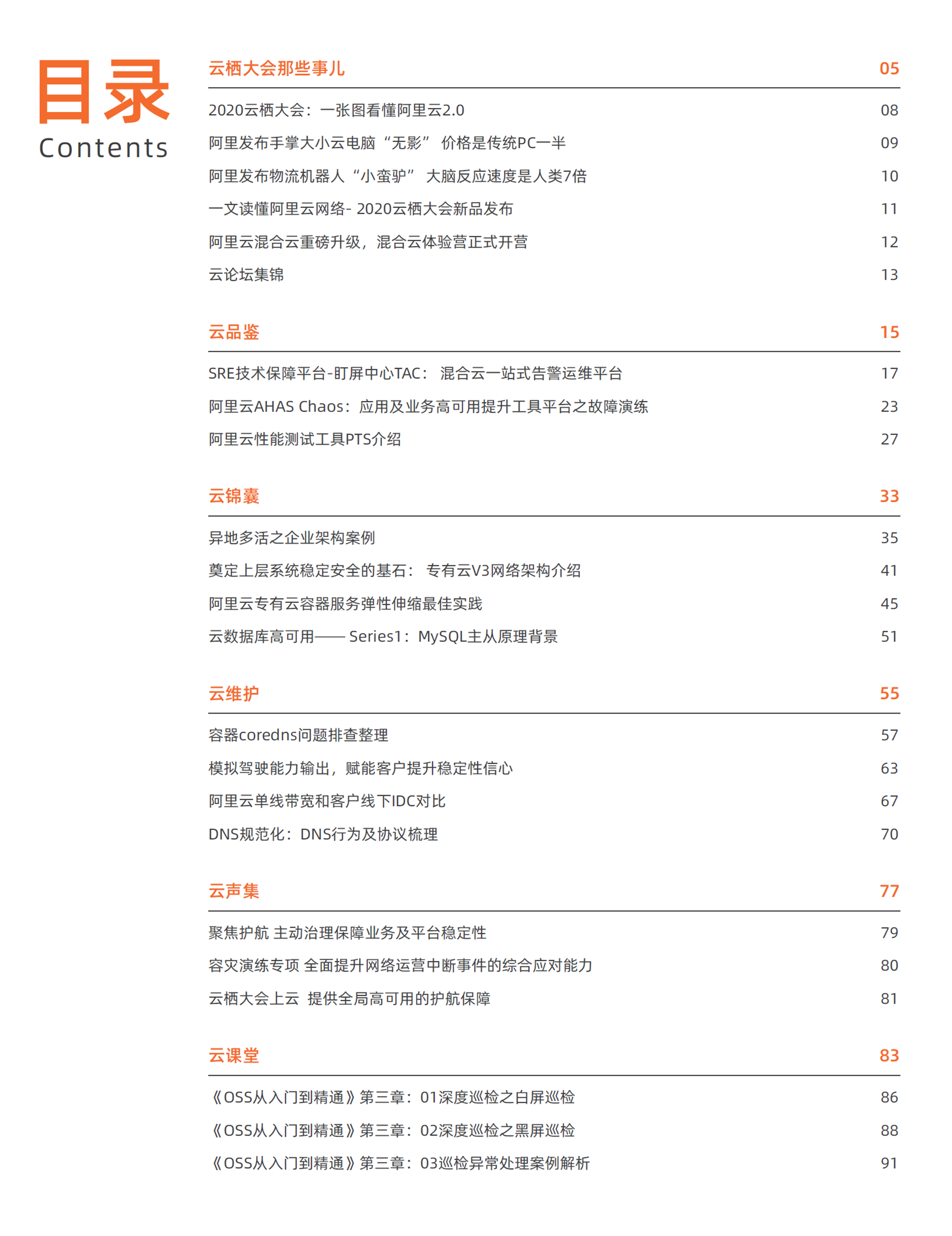《阿里云SRE技术期刊》2020年10月【电子版】
本文共 479 字,大约阅读时间需要 1 分钟。
简介:《阿里云SRE技术期刊》2020年10月【电子版】
《阿里云SRE技术期刊》2020年10月刊重磅发布啦,电子版可戳下方链接获取,感兴趣的小伙伴快来查看吧~~
有任何问题欢迎入群来询(详见文后),也欢迎您提出宝贵意见和建议哦~~


我们是阿里云智能全球技术服务-SRE团队,我们致力成为一个以技术为基础、面向服务、保障业务系统高可用的工程师团队;提供专业、体系化的SRE服务,帮助广大客户更好地使用云、基于云构建更加稳定可靠的业务系统,提升业务稳定性。我们期望能够分享更多帮助企业客户上云、用好云,让客户云上业务运行更加稳定可靠的技术,您可用钉钉扫描下方二维码,加入阿里云SRE技术学院钉钉圈子,和更多云上人交流关于云平台的那些事。

原文链接:
版权声明:本文内容由阿里云实名注册用户自发贡献,版权归原作者所有,阿里云开发者社区不拥有其著作权,亦不承担相应法律责任。具体规则请查看《阿里云开发者社区用户服务协议》和《阿里云开发者社区知识产权保护指引》。如果您发现本社区中有涉嫌抄袭的内容,填写侵权投诉表单进行举报,一经查实,本社区将立刻删除涉嫌侵权内容。
转载地址:http://oizy.baihongyu.com/
你可能感兴趣的文章
Nginx的是什么?干什么用的?
查看>>
Nginx访问控制_登陆权限的控制(http_auth_basic_module)
查看>>
nginx负载均衡和反相代理的配置
查看>>
nginx负载均衡器处理session共享的几种方法(转)
查看>>
nginx负载均衡的5种策略(转载)
查看>>
nginx负载均衡的五种算法
查看>>
nginx转发端口时与导致websocket不生效
查看>>
Nginx运维与实战(二)-Https配置
查看>>
Nginx配置Https证书
查看>>
Nginx配置ssl实现https
查看>>
Nginx配置TCP代理指南
查看>>
Nginx配置——不记录指定文件类型日志
查看>>
nginx配置一、二级域名、多域名对应(api接口、前端网站、后台管理网站)
查看>>
Nginx配置代理解决本地html进行ajax请求接口跨域问题
查看>>
nginx配置全解
查看>>
Nginx配置参数中文说明
查看>>
Nginx配置后台网关映射路径
查看>>
nginx配置域名和ip同时访问、开放多端口
查看>>
Nginx配置好ssl,但$_SERVER[‘HTTPS‘]取不到值
查看>>
Nginx配置如何一键生成
查看>>